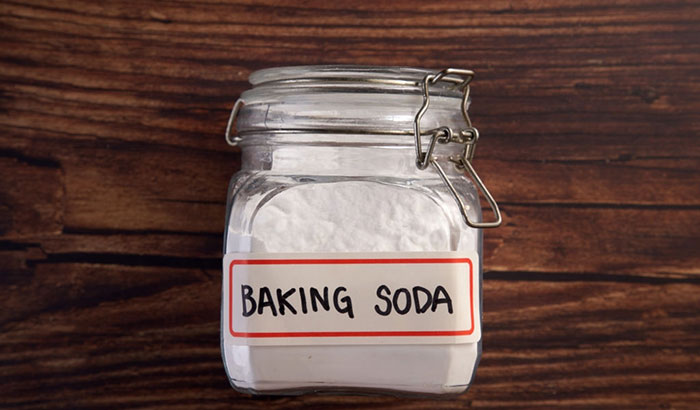Baking soda is a leavening agent that is commonly used in baking recipes to help baked goods rise. However, some people claim that it can also raise pH levels. In this blog post, we’ll take a closer look at the science behind baking soda and explore whether or not it can actually raise pH levels in your recipes.
Baking soda is a white crystalline powder that is also known as sodium bicarbonate. It’s a base with a pH level of around 8, making it slightly alkaline. When it’s combined with an acidic ingredient, such as vinegar, lemon juice, or cream of tartar, it produces carbon dioxide gas that helps your baked goods rise. However, the question remains: can baking soda raise pH levels in your recipes, and if so, what are the implications?

To start, it’s important to understand what pH actually means. pH is a measure of acidity or basicity in a solution, ranging from 0 to 14. A pH of 7 is neutral, while anything below 7 is acidic and anything above 7 is basic. In baking, pH levels can affect everything from the taste and texture to the appearance of your final product. If your recipe is too acidic, your baked goods may have a sour or metallic taste. On the other hand, if it’s too basic, they may have an unpleasantly alkaline taste and a soapy or bitter aftertaste. However, baking soda can help to neutralize acidity and balance pH levels in your recipes.
When baking soda is added to a recipe, it reacts with acidic ingredients to create carbon dioxide. This reaction causes the baked goods to rise and become lighter and fluffier. However, some people claim that baking soda can also raise pH levels in the dough or batter, which can affect the overall outcome of the recipe. In the following sections, we’ll explore the pros and cons of baking soda’s effects on pH levels and discuss whether or not it’s a good idea to use it in your recipes.
Baking soda can be a lifesaver in some recipes, especially those with strong or pungent ingredients like onions or garlic. Baking soda can help to neutralize the acidity of these ingredients, which can make them less overwhelming in a dish. Additionally, baking soda can help balance the flavors in recipes that call for acidic ingredients like tomatoes or citrus. However, too much baking soda can result in an overly alkaline taste and a soapy or bitter aftertaste. To avoid this, it’s important to use baking soda in moderation and in the right amounts for your specific recipe.
What is pH?
Before we get into the specifics of baking soda, let’s first define what pH actually means. pH is a measure of acidity or basicity in a solution, ranging from 0 to 14. A pH of 7 is neutral, while anything below 7 is acidic and anything above 7 is basic. When it comes to baking, pH levels can have a significant impact on the end result of your recipe. The ideal pH levels vary depending on the type of baked goods and can affect the taste, texture, and appearance of your final product.
pH levels can also influence the Maillard reaction, which is a chemical reaction between amino acids and reducing sugars that occurs during baking. This reaction is responsible for creating the golden brown crust on baked goods and contributes to their overall flavor and aroma. A balanced pH level can help enhance this reaction, while too much acidity can result in a burnt or bitter taste. On the other hand, a high pH level can inhibit the Maillard reaction and result in a pale or underbaked product.
Acidic ingredients like lemon juice or vinegar can react with baking soda to create carbon dioxide, which helps baked goods rise. This is why baking recipes often call for a combination of baking soda and an acidic ingredient, such as buttermilk or cream of tartar. The carbon dioxide produced during this reaction gets trapped in the dough or batter, causing it to expand and create pockets of air. These air pockets are what give bread and other baked goods their characteristic light and fluffy texture. However, it’s important to find the right balance of acidic and basic ingredients in your recipe. Too much of one or the other can throw off the pH balance and result in a less than desirable product.
The pH levels in your baked goods can be influenced by a variety of factors, including the type of flour used, the temperature of the ingredients, and the cooking time and temperature. Factors such as the acidity of your water or the age of your baking soda can also affect the pH levels in your recipe. It’s important to keep these factors in mind and make adjustments accordingly to ensure the best possible outcome. Additionally, understanding the science behind baking ingredients like baking soda can help you become a better baker and make more informed decisions in the kitchen.
How does baking soda affect pH levels?
Incorporating baking soda into your recipes can have a significant impact on the final product’s pH levels, as well as its texture and flavor. Baking soda is a base, with a pH level of around 8. When it’s added to a recipe, it reacts with acidic ingredients to neutralize the acidity and create carbon dioxide. This is what causes the dough or batter to rise, and contributes to the overall texture of the baked goods. Understanding how baking soda works can help you make more informed choices in the kitchen and achieve the best possible results in your baking. Some bakers even experiment with other types of bases or acids to achieve unique tastes and textures. However, it’s important to be mindful of the potential risks of overusing baking soda or other ingredients, and to find the right balance for your recipe.
When it comes to baking, knowing how to balance pH levels is key to achieving consistent and delicious results. As we mentioned earlier, overly acidic or alkaline ingredients can throw off the pH balance of your recipe and result in less than desirable outcomes. Fortunately, there are various ingredients and techniques you can use to balance the pH levels in your baked goods. For example, you might try adding a pinch of baking soda to your acidic ingredients, like tomatoes or citrus, to help balance the flavors. On the other hand, a splash of lemon juice or vinegar can help neutralize the alkaline taste of an ingredient like baking soda. Additionally, monitoring and adjusting the temperature of your oven can also play a role in balancing pH levels, as different temperatures can affect the acidity and color of your baked goods. Overall, achieving the right pH balance in your baking takes practice and experimentation, but the results are undoubtedly worth it.
Some other tips for balancing pH levels in baking include using certain types of flour or sweeteners. For example, whole wheat flour tends to be more acidic than white flour, so using a combination of the two can help balance the pH levels in your recipe. Similarly, using an alkaline sweetener like honey or molasses can help counteract the acidity of other ingredients in your recipe. Of course, the amount of each ingredient you use will depend on the specific recipe and your personal taste preferences. However, testing and adjusting your recipe can help you achieve the perfect balance of flavors and pH levels for your baked goods.
It’s also important to be aware of the potential health risks associated with consuming too much baking soda. While small amounts are generally safe for consumption, overuse can lead to a condition called metabolic alkalosis. This occurs when your blood pH becomes too alkaline and can result in symptoms like nausea, vomiting, and confusion. Additionally, baking soda can interfere with certain medications, such as those used to treat high blood pressure. As with any ingredient, it’s important to use baking soda in moderation and consult with a healthcare professional if you have any concerns. Overall, baking with baking soda can be a fun and rewarding experience when done safely and responsibly.
Fact: Some people think they can get rid of squirrels using Baking Soda? It is true or just a myth?
Pros and Cons of Baking Soda’s Effects on pH
Baking soda’s effect on pH levels is due to its base nature. As mentioned before, baking soda has a pH level of around 8, which makes it a powerful ingredient in neutralizing other acidic ingredients. When it’s mixed with an acidic ingredient, baking soda’s alkaline properties can help balance out the pH level of the recipe.The rise of carbon dioxide in baked goods due to the reaction between baking soda and acidic ingredients can also be a factor in the shift of pH levels. Carbon dioxide has a pH of around 5, which is more acidic than water. However, the levels of carbon dioxide produced by baking soda are usually not significant enough to cause a major shift in pH levels. Therefore, the primary way that baking soda affects pH levels in recipes is through its neutralizing effect on acidic ingredients.
While baking soda’s ability to raise pH levels can be beneficial in certain recipes, it’s important to be mindful of the quantity used. Overuse of baking soda can result in an alkaline taste and a soapy or bitter aftertaste. This can ruin the overall flavor of baked goods and make them unpleasant to eat. Additionally, too much baking soda can cause baked goods to rise too quickly, resulting in a collapsed or dense texture. It’s important to follow recipe instructions carefully and not to exceed the recommended amount of baking soda.
When baking soda is combined with acidic ingredients, it can create carbon dioxide gas which helps baked goods rise and achieve a light and fluffy texture. However, too much carbon dioxide can also lead to unstable foams and undesirable textures. Therefore, it’s crucial to find the right balance of ingredients in a recipe to ensure that your baked goods turn out perfectly. One way to avoid overusing baking soda is to combine it with an acidic ingredient like lemon juice or vinegar. The acid will react with the baking soda to create carbon dioxide, while also neutralizing the alkaline taste and keeping the pH levels balanced. This technique can be especially useful in recipes for items like cakes or muffins, which require a delicate balance of ingredients in order to achieve the desired texture and flavor.
Conclusion
In addition to the effects on flavor and texture, pH levels can also play a role in the appearance of baked goods. For example, pH levels can affect the color of baked goods, especially those with natural pigments like fruit or vegetables. A shift in pH levels can impact the way those pigments react and result in an unappetizing color like brown or gray. Therefore, using baking soda in the right amounts can help maintain the natural color of your baked goods.

Hi there! I’m Astrid Ogley, a passionate foodie and avid cook. With a love for all types of cuisine, from classic comfort food to exotic international dishes, I’m always looking to expand my culinary horizons. Through this blog, I share my tips and inspiration for cooking delicious meals and exploring new flavors.
